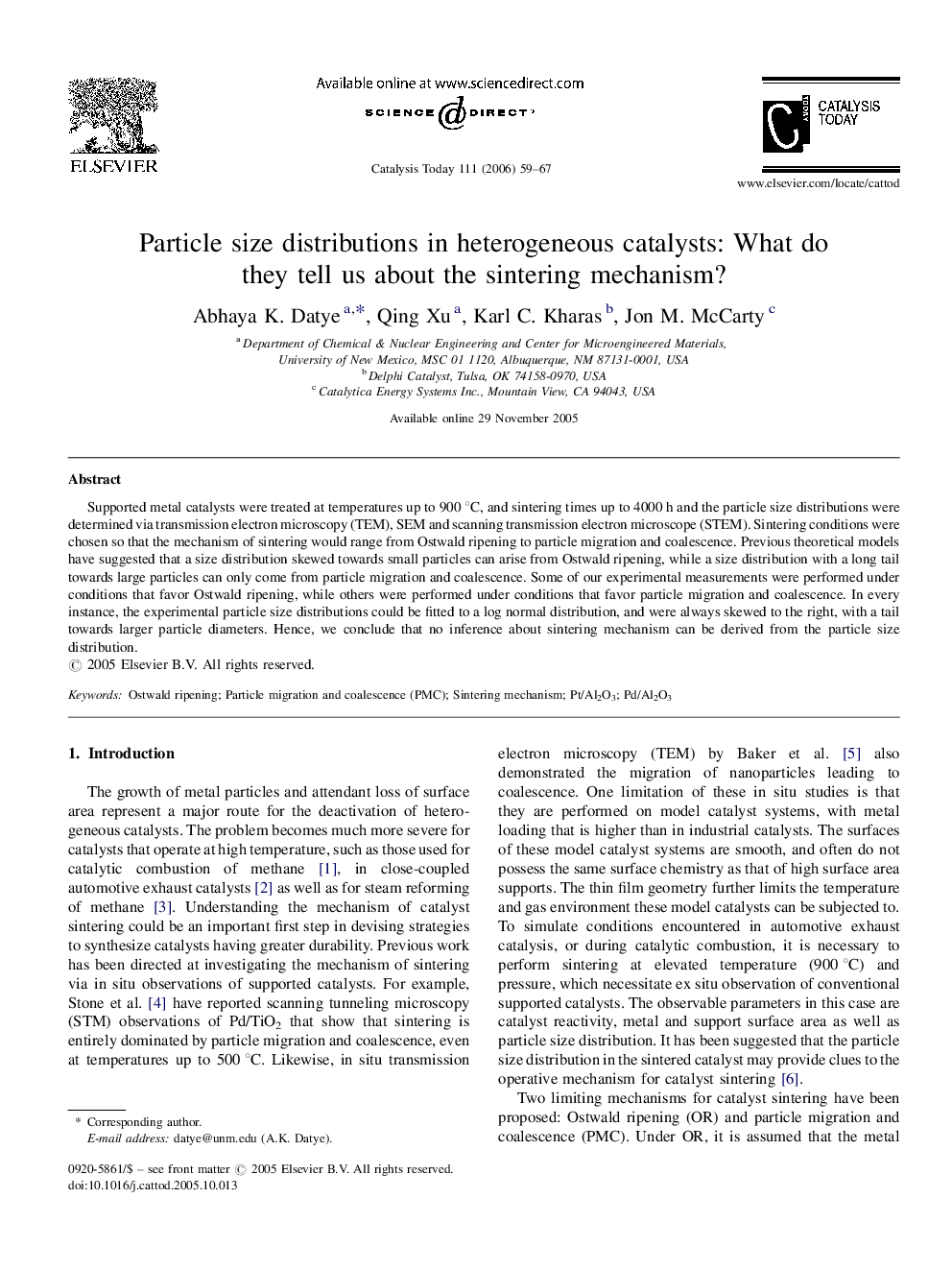| Article ID | Journal | Published Year | Pages | File Type |
|---|---|---|---|---|
| 58359 | Catalysis Today | 2006 | 9 Pages |
Supported metal catalysts were treated at temperatures up to 900 °C, and sintering times up to 4000 h and the particle size distributions were determined via transmission electron microscopy (TEM), SEM and scanning transmission electron microscope (STEM). Sintering conditions were chosen so that the mechanism of sintering would range from Ostwald ripening to particle migration and coalescence. Previous theoretical models have suggested that a size distribution skewed towards small particles can arise from Ostwald ripening, while a size distribution with a long tail towards large particles can only come from particle migration and coalescence. Some of our experimental measurements were performed under conditions that favor Ostwald ripening, while others were performed under conditions that favor particle migration and coalescence. In every instance, the experimental particle size distributions could be fitted to a log normal distribution, and were always skewed to the right, with a tail towards larger particle diameters. Hence, we conclude that no inference about sintering mechanism can be derived from the particle size distribution.
